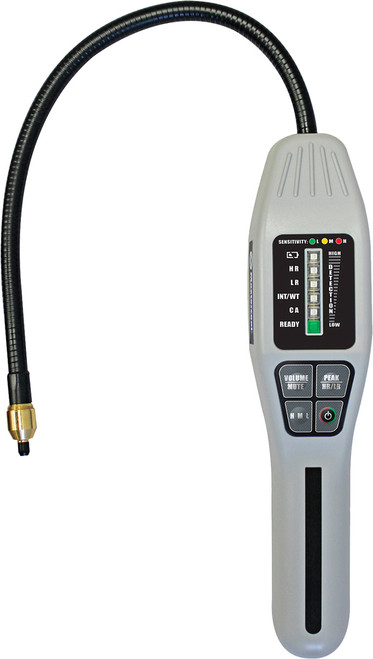Features & Benefits
- At the heart of this leak detector is a new low power metal oxide gas sensor with superior performance properties such as lower current consumption and sensor longevity. The new sensor is characterized by high sensitivity and fast response upon detecting the presence of extremely small levels of chlorofluorocarbon gases. For this reason, this sensor was selected and integrated into the 55975 Combustible Gas Leak Detector.
- In addition, a powerful microprocessor was integrated into the design that automatically selects the best operating condition for the sensor to ensure optimum performance throughout its life.
- IntellaSense III Combustible Gas Leak Detector comes in a blow molded case with 2 “C” batteries, leak test vial and replacement filters
- Detects combustible gases (see below)
- Heated tin oxide sensing element
- 2000 hour sensor life
- Less than 1 second respond time
- 50 – 1000 ppm ultimate sensitivity
- Battery: 2 “C” Alkaline 6000 mAh batteries
- Operating Temperature Range: 0˚F to 120˚F
- Intelligent tip 15″” inch probe length with environment sensing element to eliminate the potential of false alarms
- Six vertical LED display with enabled selectively (red, yellow or green) to display information to the user such as the relative signal level of the detected leak, the selected sensitivity range (low/medium or high) of the unit, diagnostic information such as low battery, interference/wait, contaminated atmosphere readiness of the unit or fault conditions of the unit
- Keypad control with ON/OFF button (push-on/push-off), Volume/Mute button (high, low or mute), Sensitivity button for high, medium and low sensitivity level selection and Peak button when multiple leaks are suspected (push enable/disable)
- DETECTS: Acetone, Acetylene, Ammonia, Benzene, Butane, Butanol, Chlorine, Ethane, Ethanol, Gasoline, Hexane, Hydrogen, Hydrogen Sulfide, Isobutane, Methane (natural gas), Methanol, Methyl Acetate, Methyl Chloride, Methyl Ether, Naptha, N-Butane, Pentane, Propane, Propanol, Sulfer Dioxide and Trichloroethane



